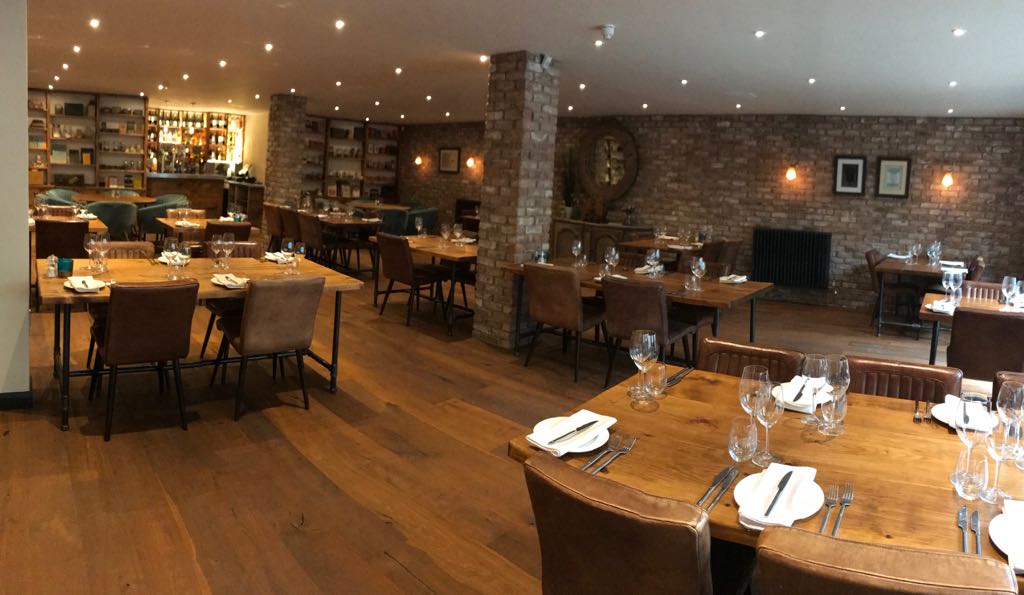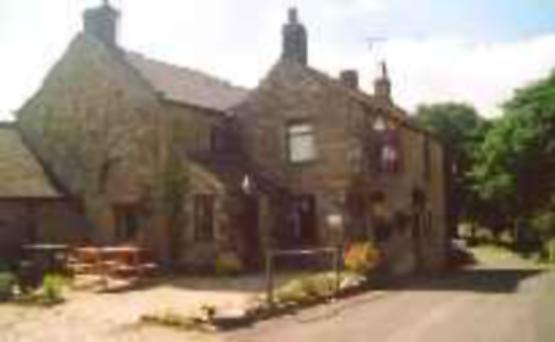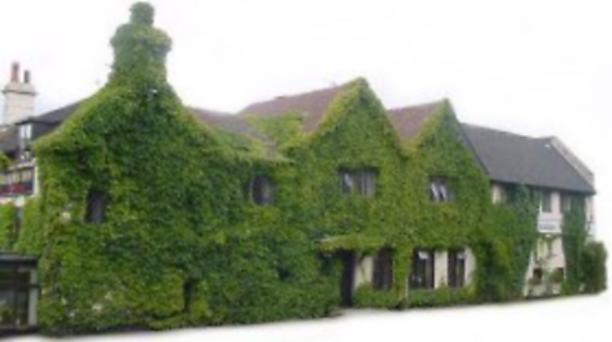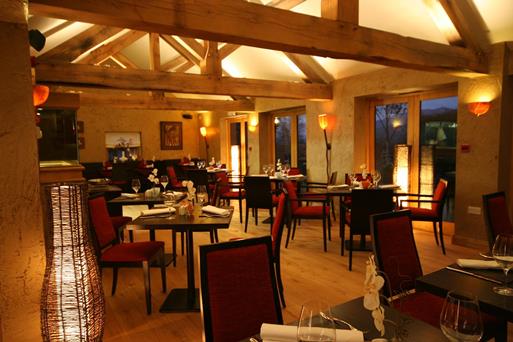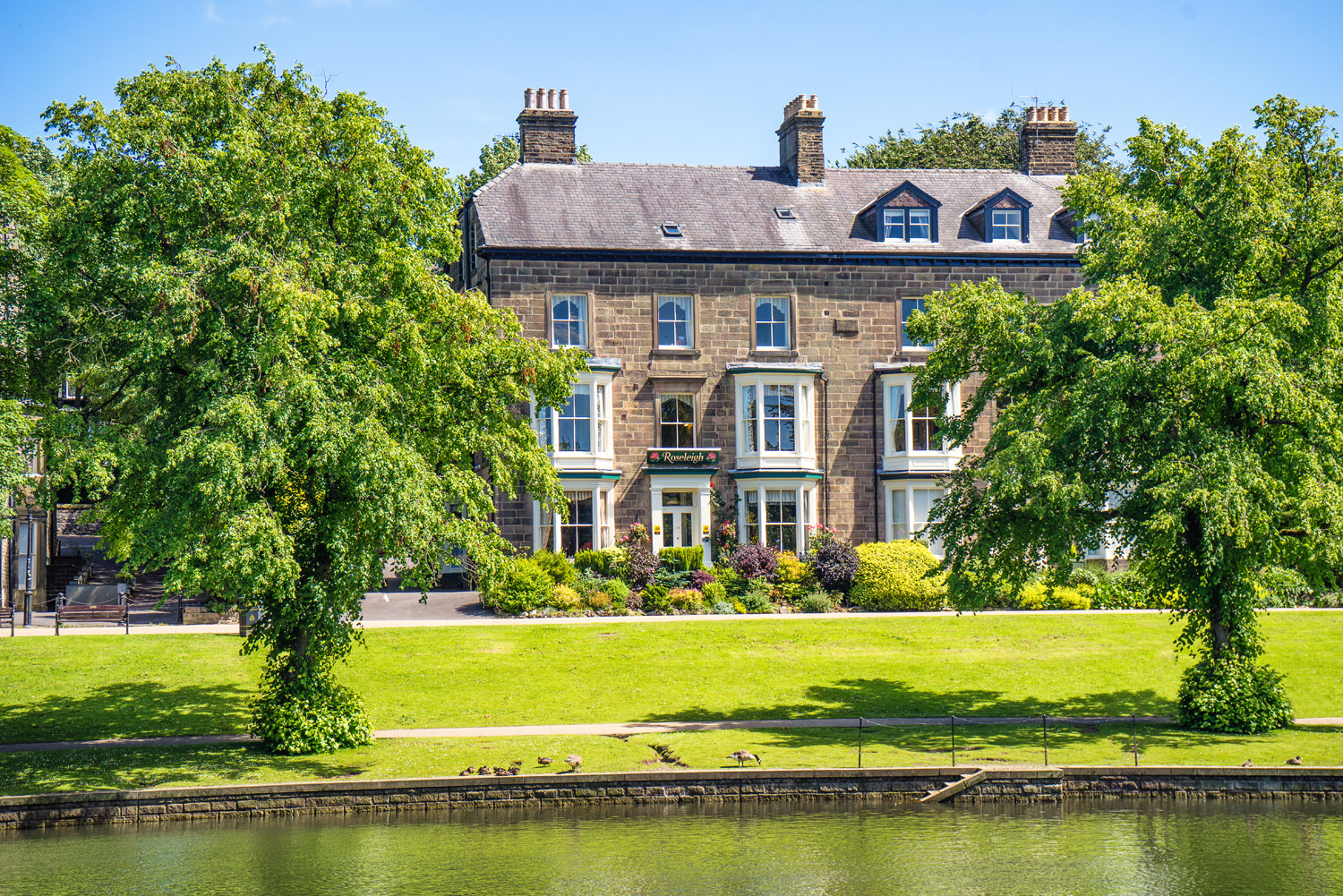This elegant property has a prime location overlooking Pavilion Gardens, and the quality…
Around Buxton

3 miles (4.8kms)
About the walk
This short walk takes a look at the town from both street level and from a lofty perch in the hills, exploring Buxton’s town centre and surrounding countryside. It begins in front of the Pavilion, an iron-and-glass edifice built in 1871 and which includes a hot house with many interesting tropical plants. The terrace in front of it leads to the square by the fine Edwardian Opera House, renovated in the 1990s and now a popular venue for all manner of stage and musical productions. Across from the Opera House is the Old Hall Hotel, built by the 6th Earl of Shrewsbury in the 16th century and incorporated into the present building in 1670.
Taking the Waters
From the Old Hall you turn into The Crescent, perhaps Buxton’s most impressive architectural feature. This elegant Georgian terrace was designed by John Carr of York and modelled on the Royal Crescent in Bath. On the opposite side of the road is the Pump Room and St Anne’s Well. The spring that later became St Anne’s Well was the one used by Roman legionaries and later by Mary, Queen of Scots, in an attempt to cure her rheumatism. The well produces a permanent (and free) supply of clean water that because of filtration through the limestone has no sulphurous smell or unpleasant taste. Follow the lead of local people and fill up your water bottle!
Church, Temple and Cavern
Once you’ve taken the waters it’s time to walk through the oldest settled part of Buxton, further up the hill beyond the Town Hall. The market cross here dates back to the 15th century, and originally stood on Cockyard Hill, near where the Palace Hotel stands now. It was moved in 1813 when Buxton was awarded its market charter. A little further on, tucked away on an easily missed side street, is St Anne’s Church. It’s the oldest building in Buxton and dates back to 1625. Once clear of the houses the walk climbs through the woods of Grin Low to reach Solomon’s Temple on the open top of the hill. It was built in 1896 by Solomon Mycock on the site of a neolithic burial mound in an exercise to provide work for the unemployed. The view over Buxton is impressive, with the moors of Combs Moss beyond and Axe Edge away to the east. The final feature on the route is Poole’s Cavern, one of the so-called ‘Seven Wonders of the Peak’ and named after the ‘robber Poole’, who lived here in the 15th century. Archaeologists have uncovered fascinating relics of Stone and Bronze Age cave dwellers, along with some fine Roman artefacts.
Walk directions
From the car park walk eastwards along the wide terrace, past the indoor swimming pool and between the Pavilion and the gardens, until you come to the Opera House at the far end. Turn right and go across to the Old Hall Hotel, then left into The Crescent. Walk past St Anne’s Well on the right and just beyond the former Pump Room go right for the surfaced path up the parkland of The Slopes. Cut through to the left of the Town Hall to reach the Market Place.
Go ahead through the wide Market Place and on along the High Street of Higher Buxton. St Anne’s Church is off to the right. Drop down to a five-way junction with traffic lights, where you turn half right along Green Lane as far as its junction with College Road.
Turn left by a public footpath sign for a wide surfaced track, then go right, across the recreation ground. The path now climbs the hillside to enter Grin Low Wood. Follow the main route half right and up through trees, across a rocky section, to emerge at a gate at the top of the woods.
Go through the gate and continue up and across the bumpy, open hillside, making a beeline for Solomon’s Temple at the very top of the hill.
Descend on the well-used path northwestwards, with the town far below on your right. Go over a stile at the woodland edge for the main route downhill through the trees, following signs for Poole’s Cavern. Stay on the broad track all the way down, ignoring routes off to the left and right, and nearing the bottom with the car park just in view go down steps on the right to reach the Cavern.
Walk past Poole’s Cavern and out to a road junction. Go across and down Temple Road. Follow it round to the right at a junction and all the way down to a crossroads at the bottom. Cross over via the pedestrian lights, then go right and left, and immediately left again into Burlington Road, to reach the Pavilion Gardens. Follow any of the paths past the lakes and gardens to return to the Pavilion on the far side.
Additional information
Streets and sloping woodland paths, 1 stile
Town and wooded hillside
Dogs can run free once away from the town centre
AA Walker's Map 1 Central Peak District
Pay car park by the Pavilion, off Burlington Road
Pavilion Gardens and back of Town Hall
<h3> </h3>
WALKING IN SAFETY
Read our tips to look after yourself and the environment when following this walk.
Find out more
Also in the area
About the area
Discover Derbyshire
The natural features of this central English county range from the modest heights of the Peak District National Park, where Kinder Scout stands at 2,088 ft (636 m), to the depths of its remarkable underground caverns, floodlit to reveal exquisite Blue John stone. Walkers and cyclists will enjoy the High Peak Trail which extends from the Derwent Valley to the limestone plateau near Buxton, and for many, the spectacular scenery is what draws them to the area.
The county is well endowed with stately homes – most notably Chatsworth, the palatial home of the Duke and Duchess of Devonshire, with its outstanding collections of paintings, statuary and art. Other gems include the well preserved medieval Haddon Hall, the Elizabethan Hardwick Hall, and Kedleston Hall, whose entrance front has been described as the grandest Palladian façade in Britain.
The spa town of Matlock is the county’s administrative centre and other major towns of interest include Derby and the old coal mining town of Chesterfield, with its crooked spire. Around the villages of Derbyshire, look out for the ancient tradition of well dressing, the decorating of springs and wells – the precious sources of life-sustaining water – with pictures formed from flowers.
Nearby stays
Restaurants and Pubs
Nearby experiences
Recommended things to do
Why choose Rated Trips?
Your trusted guide to rated places across the UK
The best coverage
Discover more than 15,000 professionally rated places to stay, eat and visit from across the UK and Ireland.
Quality assured
Choose a place to stay safe in the knowledge that it has been expertly assessed by trained assessors.
Plan your next trip
Search by location or the type of place you're visiting to find your next ideal holiday experience.
Travel inspiration
Read our articles, city guides and recommended things to do for inspiration. We're here to help you explore the UK.

